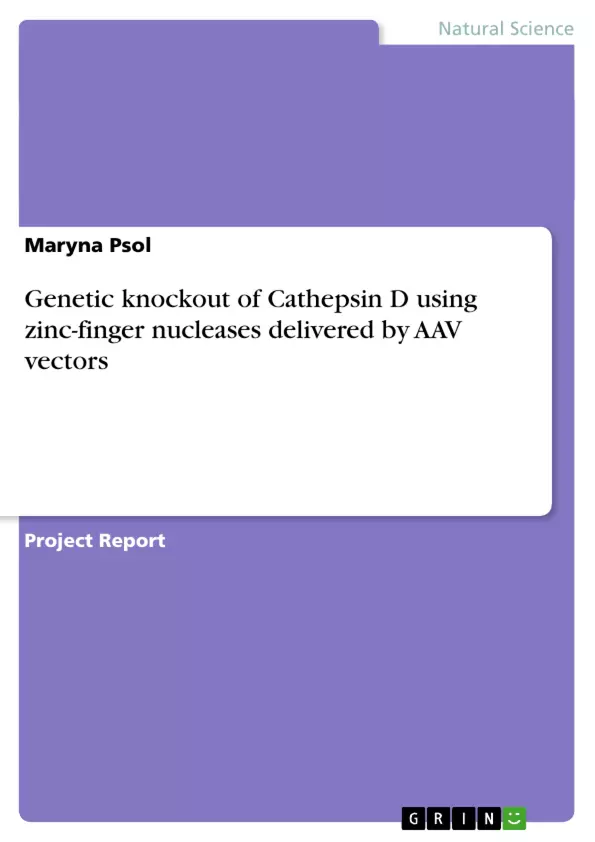Genetic engineering is known as a powerful technique for basic research and clinical applications. Recent progress in development of zinc-finger nucleases (ZFNs), which combine the DNA cleavage ability of Fok1 restriction enzyme with highly specific recognition properties of zinc-finger motifs, allows to improve efficiency and to broaden the field of use of genome editing. Here, we demonstrate our initial results in generating novel tools for Cathepsin D gene knockout in neurons based on ZFNs technology and mediated by adeno-associated virus (AAV) vectors. Pairs of AAV-ZFNs were produced and demonstrated the robust expression of nucleases in neuronal cell culture. Observed toxicity most likely was associated with heterodimerization but not homodimerization of ZFNs; cytotoxicity was greatly reduced when ZFN were provided at lower concentrations. Future studies evaluating efficiency of Ctsd knockout, off-target effects on molecular level and long-term outcomes in vivo can be performed.
Inhaltsverzeichnis (Table of Contents)
- ABSTRACT
- INTRODUCTION
- MATERIALS AND METHODS
- Molecular cloning
- AAV production
- Cell culture and transfection
- Western blot
- Immunocytochemistry
- Toxicity assessment
- RESULTS
- AAV-mediated ZFNs expression in neuronal cell culture
- Toxicity assessment
- DISCUSSION
- ACKNOWLEDGEMENTS
- REFERENCES
Zielsetzung und Themenschwerpunkte (Objectives and Key Themes)
This study aims to develop a novel tool for Cathepsin D gene (CTSD) knockout in neurons using zinc-finger nucleases (ZFNs) technology and adeno-associated virus (AAV) delivery system. The main objectives are to generate AAV vectors expressing ZFNs targeting the CTSD gene, evaluate the toxicity of these vectors in neuronal cell culture, and assess the potential of this technology for future ex vivo and in vivo studies. The key themes of this study are:- Gene editing with ZFNs
- AAV vector delivery
- Cathepsin D gene knockout
- Neuronal cell culture studies
- Toxicity evaluation
Zusammenfassung der Kapitel (Chapter Summaries)
The abstract provides a brief overview of the study, highlighting the use of ZFNs for CTSD gene knockout in neurons. It also discusses the challenges and potential applications of this technology. The introduction presents a comprehensive background on ZFNs technology, its applications, and limitations. It also discusses the role of Cathepsin D in neuronal function and disease. The materials and methods section outlines the detailed procedures employed in the study, including molecular cloning, AAV production, cell culture, transfection, Western blot analysis, immunocytochemistry, and toxicity assessment. The results section presents the findings of the study, including data on AAV-mediated ZFNs expression in neuronal cell culture and toxicity assessments. The discussion section interprets the results and discusses their implications for future research on CTSD gene knockout and its potential therapeutic applications.Schlüsselwörter (Keywords)
This study primarily focuses on gene editing, ZFNs, AAV vectors, Cathepsin D, neuronal cell culture, toxicity, and potential applications in neurodegenerative disorders. The research aims to provide a foundation for future investigations into the use of this technology for therapeutic interventions in diseases related to Cathepsin D dysfunction.- Quote paper
- Maryna Psol (Author), 2013, Genetic knockout of Cathepsin D using zinc-finger nucleases delivered by AAV vectors, Munich, GRIN Verlag, https://www.grin.com/document/263385



